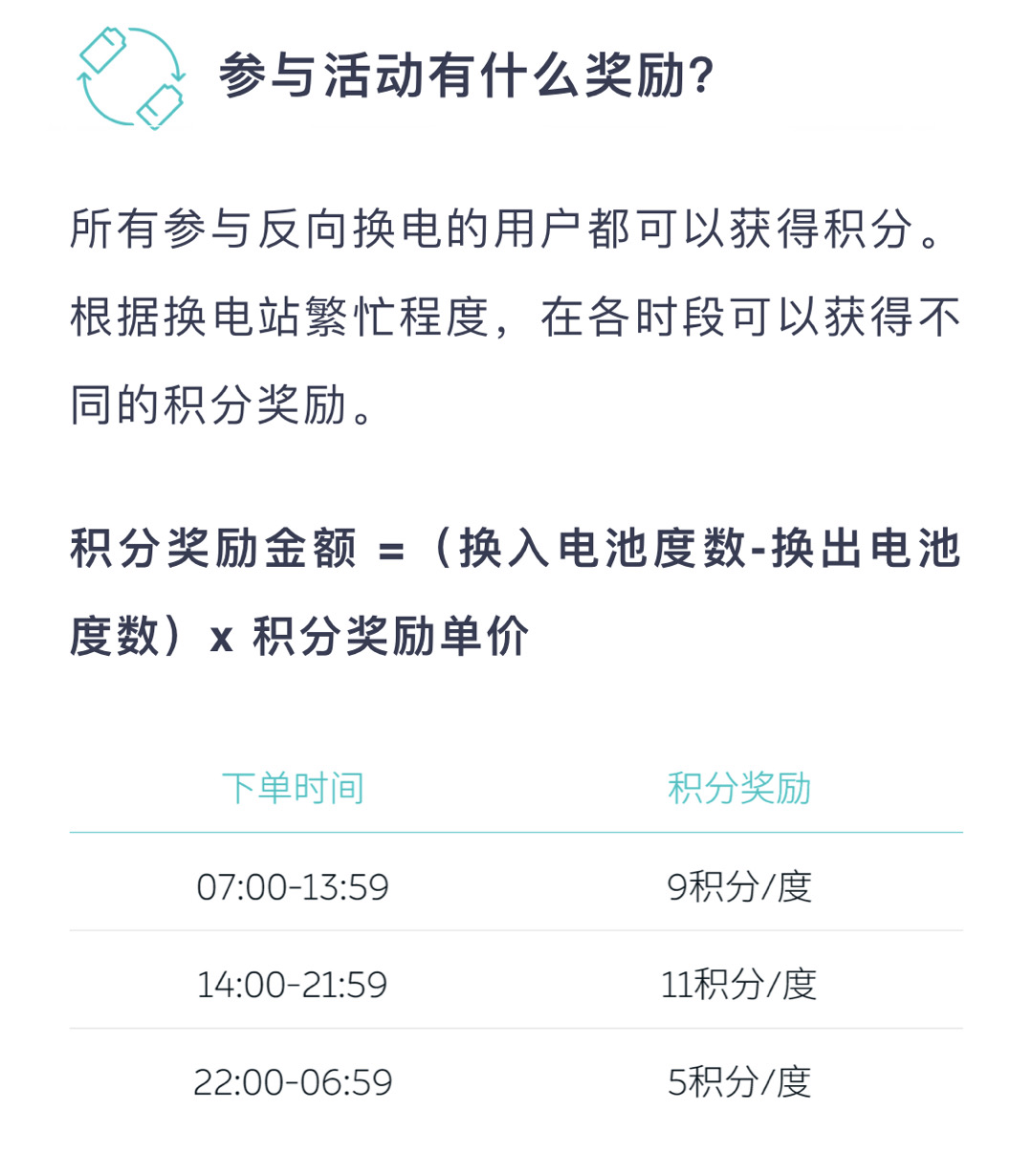On August 14th, NIO officially launched its policy of reverse power swapping, allowing car owners to do so in all urban areas, with corresponding reward points for those who participate in this activity.
Before the official promotion of reverse power swapping policy, NIO conducted a trial activity in Shanghai which seems to have been successful. It is worth noting that there are some differences between the trial and the official promotion, mainly in the way points are obtained. During the trial, car owners received 400 points each time, while now points are awarded by electricity consumption during specific time slots. The specific rules can be found in the following image:

Specific operation process:
-
Car owners still need to meet two conditions: first, electricity must not come from charging stations; second, there cannot be any record of forward power swapping within 24 hours of reverse power swapping.
-
Car owners should apply to swap power with the agent, stating that they wish to participate in “reverse power swapping” and swap to the battery with the lowest remaining power at the station.
-
After completing the power swap, reward points will be automatically credited to the car owner’s account within 3 working days.
Since NIO’s reverse power charging policy was first trialed, there has been some controversy around it. Some users believe that “the logic behind it is actually quite good, as car owners sell power to NIO, use slow charging instead of fast charging, and protect the battery. Although the effect is small, it does conform to the logic of peak-hour filling and off-peak hour reduction”. But there are also users who say, “Do NIO users really need such a small sum of electricity bills?” and “although it is paid, it seems a bit utopian.”
This article is a translation by ChatGPT of a Chinese report from 42HOW. If you have any questions about it, please email bd@42how.com.
